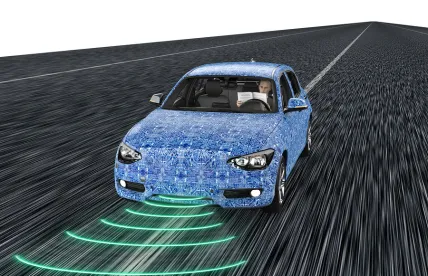The National Highway Traffic Safety Administration (NHTSA) continues to be active in investigating potential safety-related defects and noncompliances with Federal Motor Vehicle Safety Standards (FMVSS). As the deployment of advanced vehicle technologies continues to accelerate, NHTSA has also been increasing its enforcement capacity, while looking for ways to encourage innovation in this area. NHTSA has taken—and likely will continue to take—a wait-and-see approach to autonomous vehicles, leveraging its research capacities and conducting industry outreach to develop regulations that do not stifle innovation.
Agency Investigations
NHTSA has been working to substantially increase the investigator headcount in its Office of Defects Investigation (ODI), along with reorganizing its enforcement office. In concert with these changes, NHTSA has continued developing a more data-driven approach to determining whether to open defect investigations.
Additionally, NHTSA collects troves of data—such as vehicle owner questionnaires, early warning reports, and accident reports—that it is trying to leverage using sophisticated data-mining techniques. For more than a year, NHTSA has been working with manufacturers to develop risk matrices that would utilize existing available data to guide its decision-making around the opening of formal investigations. NHTSA’s intention is to eventually make these matrices public, in order to demonstrate a more objective and transparent process.
NHTSA’s investigations staff was active throughout 2018, opening more than 30 formal investigations. As the number of new investigators continues to increase, manufacturers should anticipate more formal investigations along with more informal contact from NHTSA to discuss potential safety issues prior to a formal investigation. Manufacturers should actively monitor NHTSA’s VOQ data for complaints related to their products to assist in identifying potential safety defects and to prepare for potential questions from NHTSA, as well as have processes in place to enable prompt and effective responses to NHTSA inquiries.
Similar to the periodic meetings it holds with manufacturers under Consent Orders, NHTSA has sought voluntary meetings with major OEMs and large Tier One suppliers. Though manufacturers are not required to agree to these meetings, regular contact with NHTSA can be beneficial in understanding its focus and building a constructive relationship with agency staff. When engaging in these informal meetings, manufacturers should look to understand the agency’s expectations, particularly in terms of what information is expected to be shared. Suppliers should also be sensitive to their customers’ views on these meetings and how their information might be shared with NHTSA.
NHTSA also has made changes in its Recall Management Division (RMD). In 2018, the Department of Transportation’s Office of the Inspector General released a report that criticized certain aspects of NHTSA’s oversight of passenger vehicle recalls. The report found that NHTSA’s processes lacked documentation and management controls and, among other things, did not “ensure that remedies are reported completely and in a timely manner.” Relevant to manufacturers, the criticisms also included NHTSA’s failure to follow up on required documents that were not submitted during the recall, lack of processes for monitoring equipment recalls, failure to monitor the scope of recalls, and failure to verify recall completion rates. NHTSA has since increased its focus on ensuring that manufacturers submit all required documents and information in a timely manner.
With RMD’s focus on timely and complete documentation likely to continue, manufacturers should audit their recall submissions to ensure they are up to date and complete. They should also take actions to reduce their compliance risk, such as:
- Implement (or update) safety compliance policies that provide internal guidance to company personnel for identifying and investigating potential safety defects and FMVSS noncompliances
- Implement (or update) procedures for complying with all associated NHTSA reporting requirements
- Revisit early warning reporting procedures to ensure they capture all relevant information
- Ensure recall documents are complete and timely filed
- Conduct thorough training of key personnel across the organization – domestically and globally – on these procedures and on the importance of bringing potential safety concerns to the attention of appropriate personnel or safety committees
Autonomous Vehicles
The U.S. Department of Transportation (USDOT) has been actively reviewing regulations throughout the country’s ground transportation network with the goal of promoting regulatory consistency; adopting flexible, technology-neutral policies that promote competition and innovation; modernizing regulations and removing regulatory barriers to advanced and autonomous technologies in transportation; and providing guidance, best practices, and pilot programs to promote automation throughout the transportation network.
These principles were explained in detail in the USDOT’s recent policy document, Automated Vehicles 3.0: Preparing for the Future of Transportation (“AV 3.0”), which was released in September 2018. AV 3.0 builds on and clarifies prior policy statements released in September 2016 (AV 1.0) and September 2017 (AV 2.0). Due to the rapid changes in autonomous vehicle technologies, the industry should anticipate further refinements to the policy in 2019. AV 3.0 contains principles that will guide future policies, one of which is the focus on removing regulatory barriers that may constrain the development of automation and issuing voluntary guidelines rather than regulations.
The policy also states that NHTSA’s current safety standards do not prevent the development, testing, and sale of advanced driver assistance systems (ADAS) in vehicles that comply with current FMVSSs, which would include maintaining traditional controls for human-operated vehicles. Current regulations, however, may pose regulatory barriers for alternative designs, such as non-traditional seating arrangements or vehicles without steering wheels and pedals. In light of this, AV 3.0 states that USDOT, including NHTSA, will interpret and adapt regulatory definitions of “driver” and “operator” to recognize automated systems. Further, NHTSA plans to continue using the self-certification approach to safety standards (as opposed to the type-approval approach used in Europe and elsewhere) and actively seek to remove regulatory barriers.
NHTSA has taken steps to meet these goals, including publishing requests for public comments and holding public meetings regarding potential barriers. It has also requested comments on a potential pilot program that would collect data on the operation of autonomous vehicles, as well as potential standards involving advanced technologies, such as adaptive driving beam systems and camera-based rear visibility systems.
NHTSA has also been actively researching methods for evaluating and testing ADAS, which will guide its future evaluation of ADAS and Level 3 through Level 5 autonomous vehicles. Manufacturers working in the ADAS space should study this research, take advantage of the opportunity to publicly comment on NHTSA’s proposals or requests for comment, and reach out to the agency to ensure personnel understand their technology well enough to regulate and investigate potential failures appropriately.





 />i
/>i

